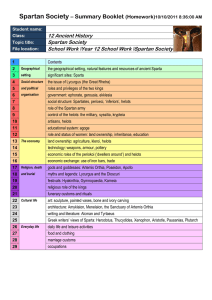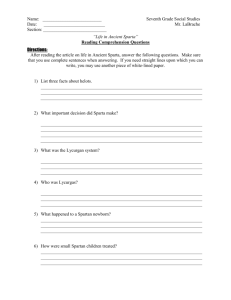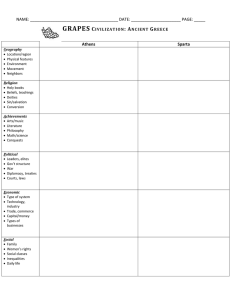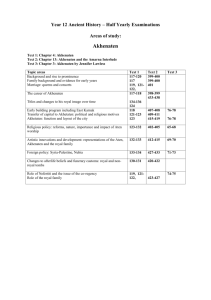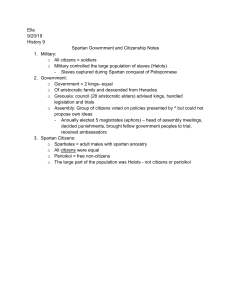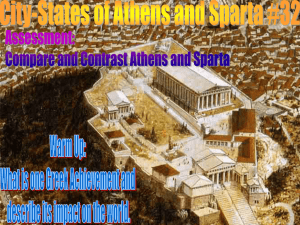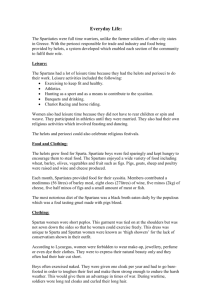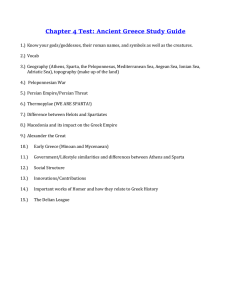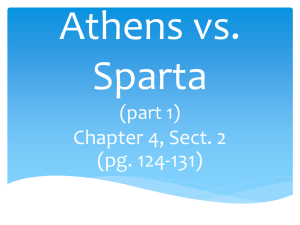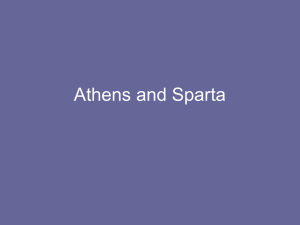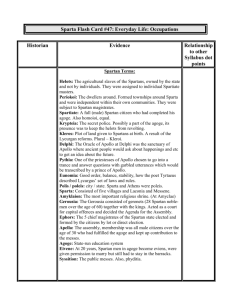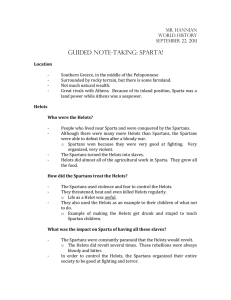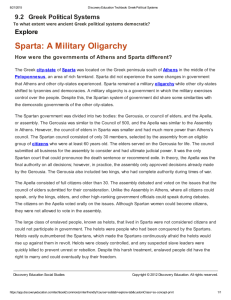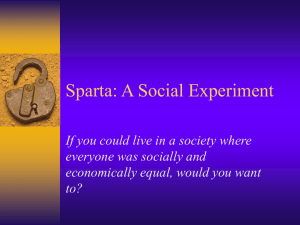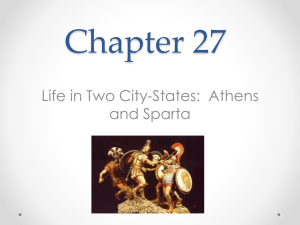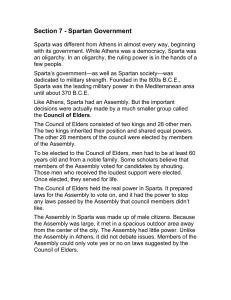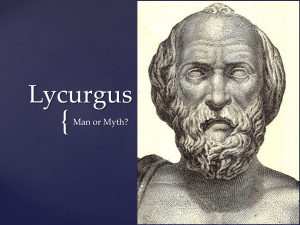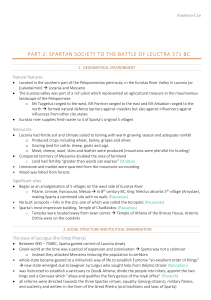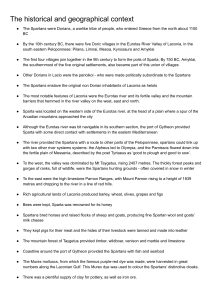spartan society to the battle of leuctra 371 bc
advertisement
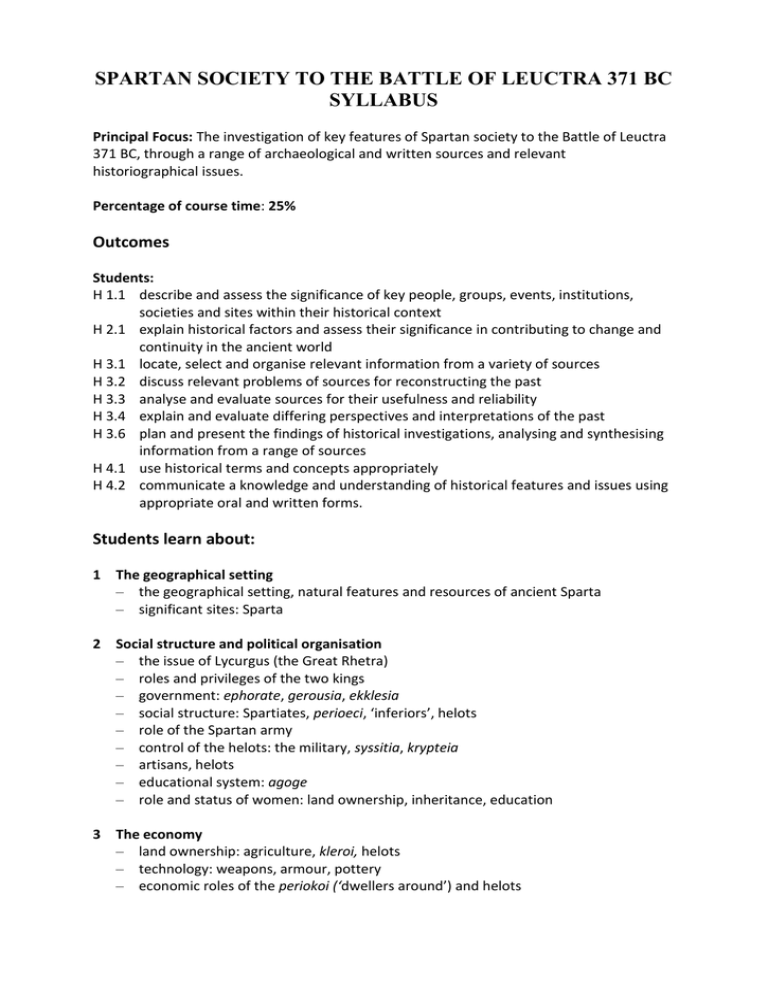
SPARTAN SOCIETY TO THE BATTLE OF LEUCTRA 371 BC SYLLABUS Principal Focus: The investigation of key features of Spartan society to the Battle of Leuctra 371 BC, through a range of archaeological and written sources and relevant historiographical issues. Percentage of course time: 25% Outcomes Students: H 1.1 describe and assess the significance of key people, groups, events, institutions, societies and sites within their historical context H 2.1 explain historical factors and assess their significance in contributing to change and continuity in the ancient world H 3.1 locate, select and organise relevant information from a variety of sources H 3.2 discuss relevant problems of sources for reconstructing the past H 3.3 analyse and evaluate sources for their usefulness and reliability H 3.4 explain and evaluate differing perspectives and interpretations of the past H 3.6 plan and present the findings of historical investigations, analysing and synthesising information from a range of sources H 4.1 use historical terms and concepts appropriately H 4.2 communicate a knowledge and understanding of historical features and issues using appropriate oral and written forms. Students learn about: 1 The geographical setting – the geographical setting, natural features and resources of ancient Sparta – significant sites: Sparta 2 Social structure and political organisation – the issue of Lycurgus (the Great Rhetra) – roles and privileges of the two kings – government: ephorate, gerousia, ekklesia – social structure: Spartiates, perioeci, ‘inferiors’, helots – role of the Spartan army – control of the helots: the military, syssitia, krypteia – artisans, helots – educational system: agoge – role and status of women: land ownership, inheritance, education 3 The economy – land ownership: agriculture, kleroi, helots – technology: weapons, armour, pottery – economic roles of the periokoi (‘dwellers around’) and helots – economic exchange: use of iron bars, trade 4 Religion, death and burial – gods and goddesses: Artemis Orthia, Poseidon, Apollo – myths and legends: Lycurgus and the Dioscuri – festivals: Hyakinthia, Gymnopaedia, Karneia – religious role of the kings – funerary customs and rituals 5 Cultural life – art: sculpture, painted vases, bone and ivory carving – architecture: Amyklaion, Menelaion, the Sanctuary of Artemis Orthia – writing and literature: Alcman and Tyrtaeus – Greek writers’ views of Sparta: Herodotus, Thucydides, Xenophon, Aristotle, Pausanias, Plutarch 6 Everyday life – daily life and leisure activities – food and clothing – marriage customs – occupations. Exam component: Students must answer three questions, worth a total of ten marks, plus one worth 15 marks. The 15 mark question must be answered with reference to the source provided.
